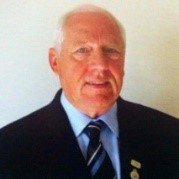Augusta Explores New Ways of Thinking About Waste
Augusta Matters by Mayor Doug Malanka
(As published in the South Grenville Journal – Thursday, December 3, 2020)
We have all heard the adage that one person’s junk is another person’s treasure. Normally, we might think of this on a smaller, individual, or household scale. For our local residents, Augusta Township holds “Treasure Days” on the second Saturday of May and September where property owners and renters alike are able to set out good condition, useful items at the end of their driveways for other residents to drive around and pick them up, and over the years, I have seen everything from bicycles to baby furniture set out on Augusta’s roadsides on these Treasure Days.
Then, on the material scale, we get into the ideas of composting, recycling and waste diversion, where we direct materials that are not truly garbage to be reprocessed, shredded, or melted down in order to get them into a form where we can effectively use them again, and keep them from going into a landfill. I am very proud of all our Augusta residents who supported the recycling process by separating more than 2,500 tons (over 5.5 million pounds!) of mixed papers and fibres, plastic, glass, scrap metal and aluminum over the last four years preceding.
For the Township, looking for new opportunities to increase our recycling and composting to reduce the amount of waste that is collected and transported via our Transfer Stations means that we can receive additional funding from Stewardship Ontario toward these initiatives, which can free up tax dollars for other needed projects.
More recently, I have been participating in conferences and meetings where waste processing has been discussed on a much larger, regional, and industrial scale. One company’s junk can be another company’s treasure, or “feedstock” for their operations, to create much needed jobs. If we get enough companies sharing their unusable, end-of-their-line materials in large enough quantities, we can develop what is known as a circular economy, where Company A’s waste materials support Company B’s operations; Company B’s by-product chemicals can be used by Company C; and Company C’s leftovers can in turn be made use of by Company A again to keep their business growing.
By cooperating and looking for more synergies, and working with agencies like our Bioindustrial Innovation Canada (BIC) East office to promote sustainable start-up companies, we can convert our local and regional waste-that-isn’t-really-waste from a liability into an asset in order to create new jobs and new products. And if we can all pay less to dispose of potentially usable products and materials, we will contribute together for a better environment to hand to our next generation.






